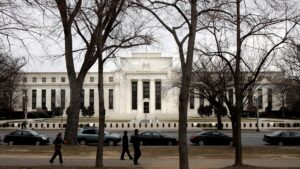Understanding Interest Rates: What the Fed’s Recent Decision Means for Your Wallet
At Extreme Investor Network, we believe in empowering our readers with the most relevant financial insights to navigate the ever-evolving economic landscape. Recently, the Federal Reserve made headlines by keeping interest rates unchanged, a move that has both immediate and long-term implications for consumers. If you’re looking for clarity amid the noise, you’ve come to the right place.
Why Did the Fed Hold Rates Steady?
On Wednesday, the Federal Reserve announced it would maintain its current interest rate levels, which has remained a burning issue as inflation continues to hover above the Fed’s target of 2%. This decision follows a year of aggressive rate cuts that saw the central bank slash its benchmark interest rate by a substantial full percentage point.
President Trump’s comments demanding immediate cuts signal a growing concern over rising prices, but these pressures will not likely lead to immediate relief for consumers. In fact, a recent CNBC Fed Survey indicates there may only be two cuts later this year, mirroring the forecasts of Federal Reserve officials. This means fewer expectations for widespread rate reductions, which is crucial for those struggling with high borrowing costs.
Inflation’s Persistent Shadow
The inflationary landscape has shifted dramatically since the pandemic, driving prices to heights not seen since the early 1980s. The Fed responded with a series of interest rate hikes, marking its benchmark rate at the highest level in more than 22 years.
Michele Raneri, TransUnion’s Vice President, highlights that while inflation concerns have eased somewhat, they remain prevalent. For consumers, this could mean a prolonged period of high prices without the anticipated relief from rate cuts.
Impact on Consumer Borrowing Costs
Consumers are feeling the sting of these economic decisions. The spike in interest rates has led to rising costs across various borrowing categories, pushing many households into financial strife. For instance, Greg McBride, Bankrate’s chief financial analyst, emphasizes that even with an impending reduction in the benchmark rate, consumers shouldn’t expect a substantial decrease in borrowing costs shortly.
This is What to Expect in 2025
-
Credit Cards
Credit cards are particularly sensitive to changes in the Fed’s rates, as most have variable interest rates. Currently, the average credit card interest rate exceeds 20%, near an all-time high. While future cuts may ease these rates slightly, the relief may not be significant enough. Consider consolidating high-interest debt with a lower-rate personal loan or an interest-free balance transfer credit card to alleviate the financial burden. -
Mortgage Rates
Fixed mortgage rates are indirectly affected by the Fed’s policies. The average 30-year mortgage rate is now above 7%. Going forward, we could see the rates hover in the 6% range, but unless homeowners choose to refinance or sell, their existing mortgage rates will remain unchanged. -
Auto Loans
If you’re in the market for a new car, brace yourself. The average rate for a five-year auto loan hovers around 5.3%, with rising vehicle prices making payments increasingly unaffordable. The combination of high vehicle prices and persistent rate signals from the Fed means that affordability challenges will likely continue. -
Student Loans
Most federal student loans have fixed rates, meaning immediate impacts from Fed decisions are minimal. However, new undergraduate students will pay higher rates, with the direct federal loan rates rising to 6.53% for the 2024-25 academic year. - Savings Rates
For savers, there is a silver lining. Despite the Fed’s hold on rates, top online savings accounts are still offering yields close to 5%. While it may not be as high as the peaks seen previously, it’s a favorable time to look for high-yield savings accounts to maximize your returns.
Conclusion: Be Proactive with Your Personal Finances
As we digest the implications of the Fed’s recent decision, remember that financial self-management is crucial in times of economic uncertainty. While relief may be on the horizon, waiting for it without taking proactive steps won’t suffice. Assess your borrowing strategies, seek lower interest options, and capitalize on your savings to fortify your financial position.
At Extreme Investor Network, we’re committed to bringing you the latest insights and strategies that empower you to make informed decisions. Stay ahead of the curve by adapting your financial plans in response to these economic changes. Together, we can navigate the complexities of personal finance with confidence.

